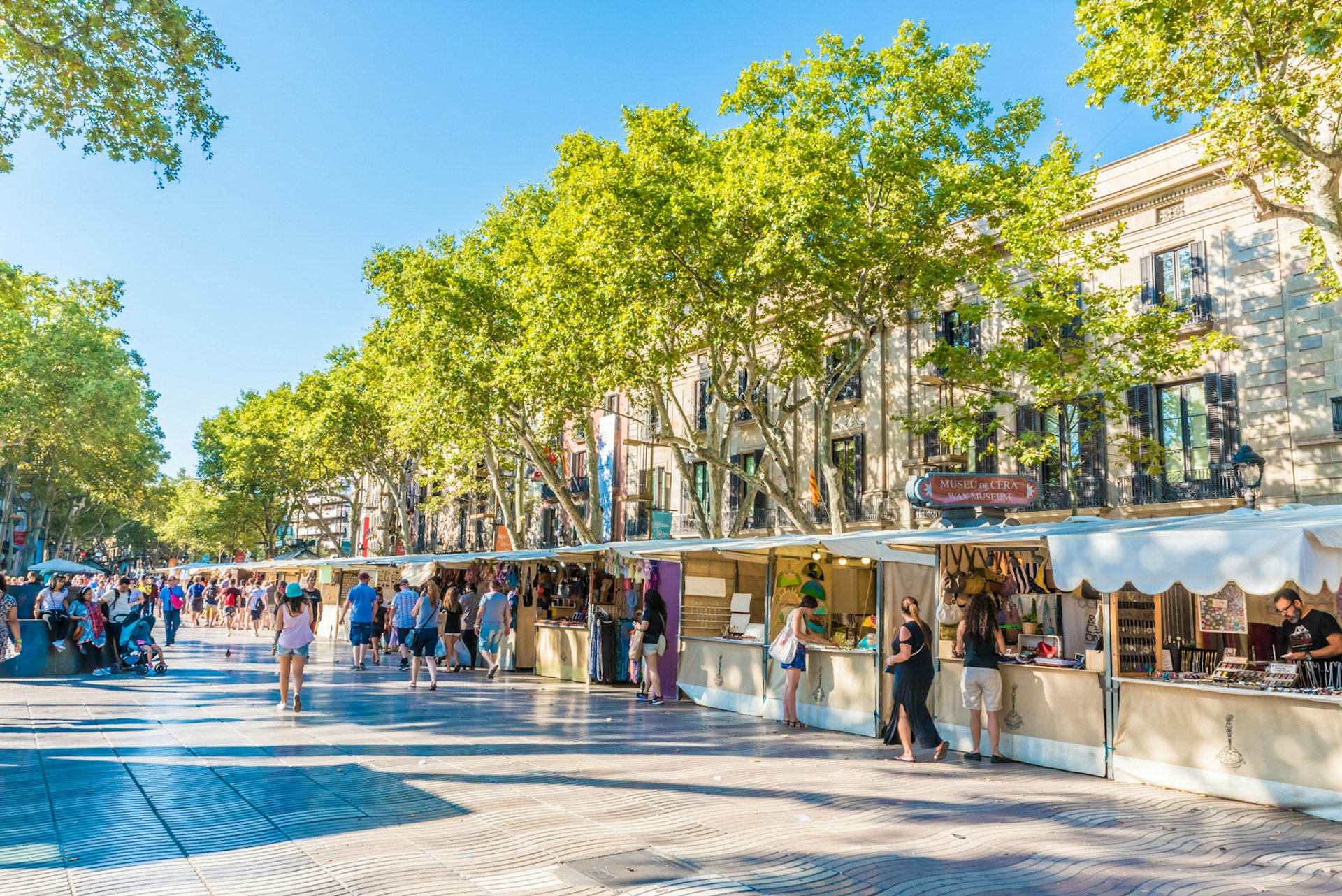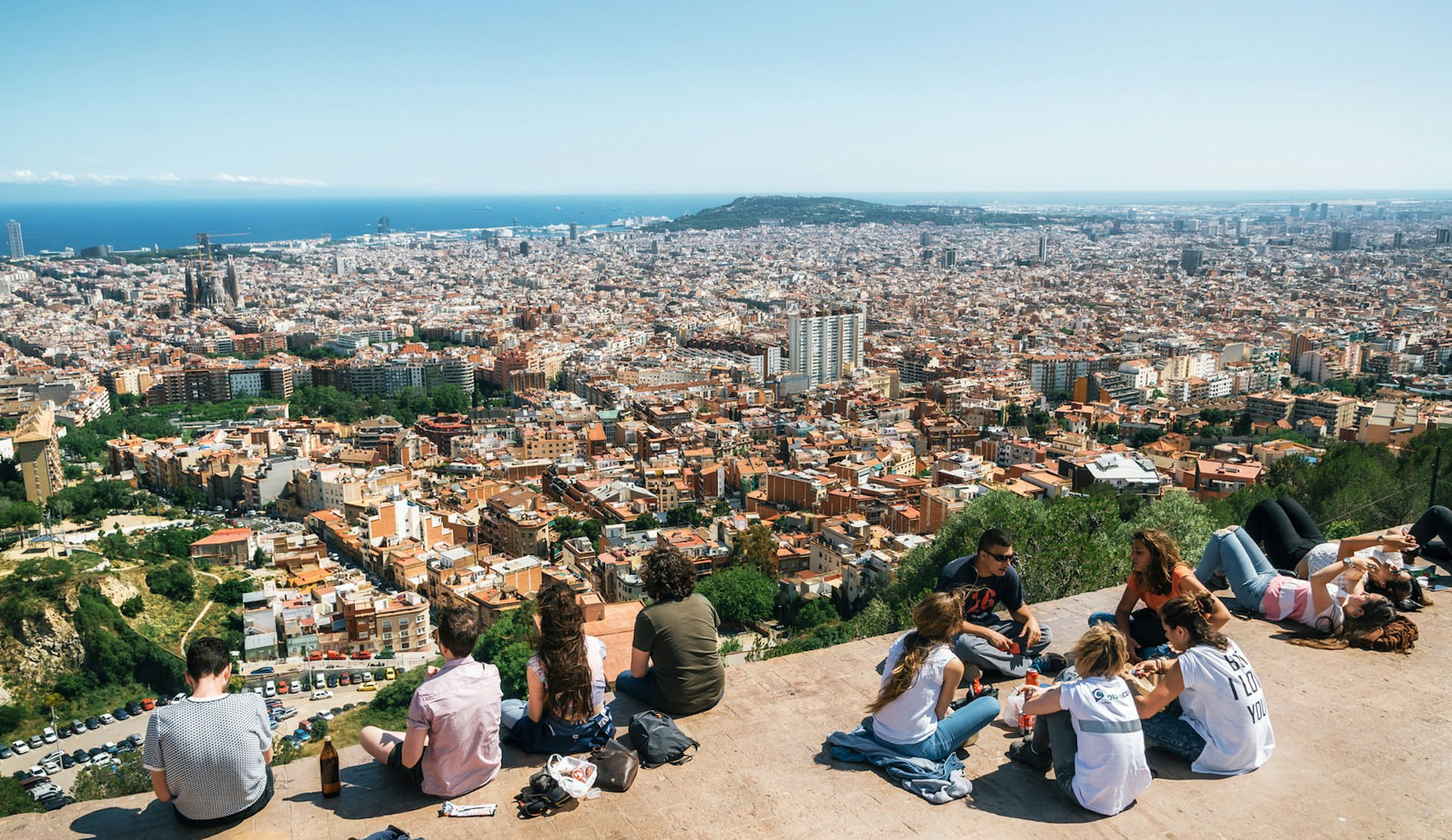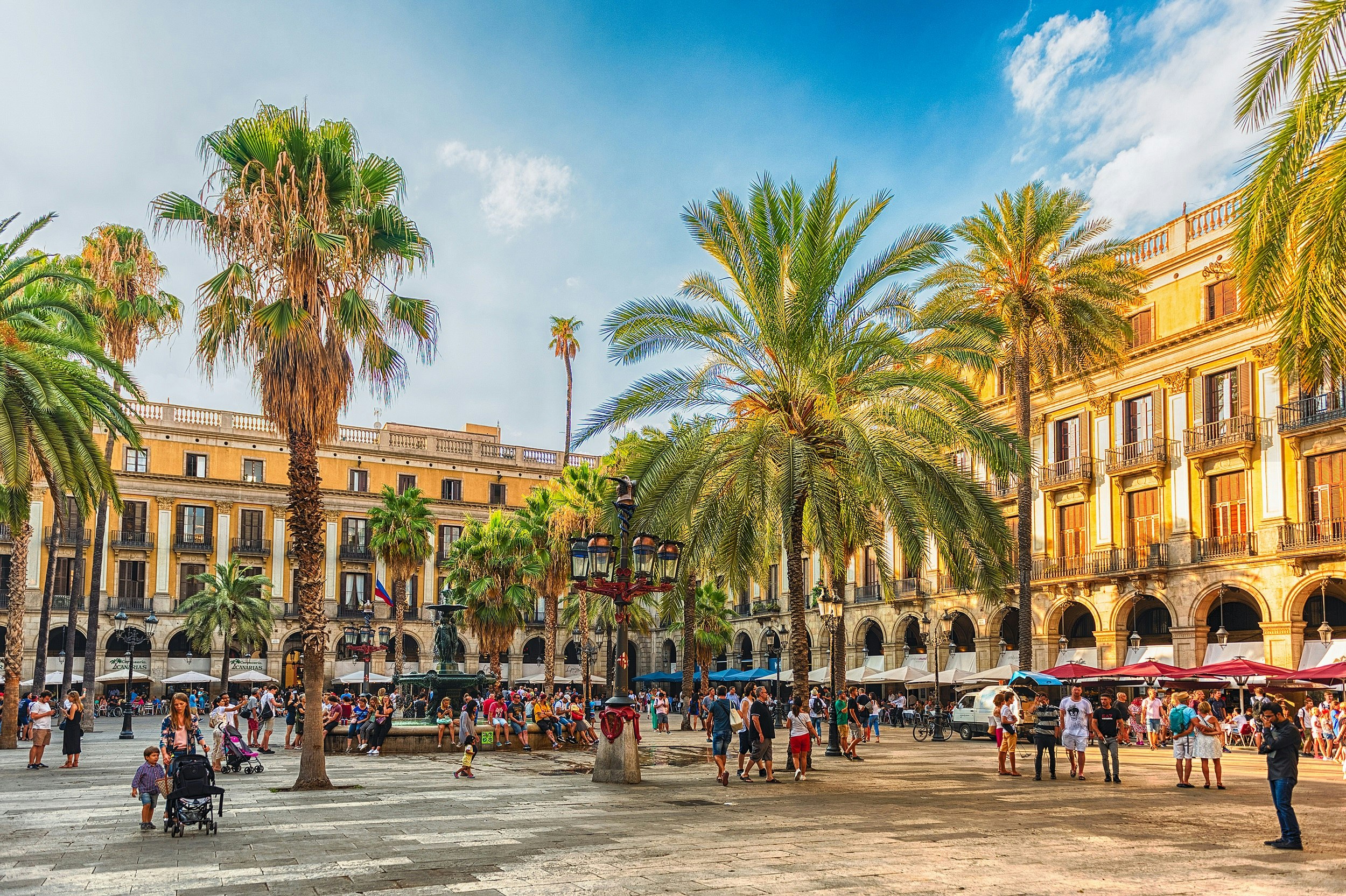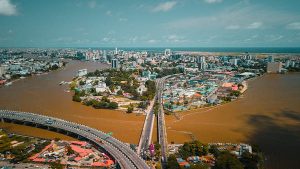
Barcelona has enough to keep the most voracious of culture vultures and self-indulgent of gourmets happy for weeks, but all those entry fees and tapas bills can mount up.
Luckily, with this list of free things to do in Barcelona, you can enjoy the best of this wonderful city without spending a fortune.
Make the most out of every adventure with help from our weekly newsletter delivered to your inbox.
1. Check when museums have free admission times
Some city-run museums, including the Museu Picasso and MNAC, have a late afternoon or evening each week when entry is free. Others are also free on the first Sunday of the month; check individual websites for details. Moco Museum doesn’t offer free entry (except for children under 9) but is cheaper early or late in the day.
There are also two excellent galleries nearby La Rambla that host changing exhibitions with free entry: the Centre de la Imatge in the Palau de la Virreina near the top of the boulevard, and the Centre d’Art Santa Mònica toward the bottom.
Local tip: Wherever possible, book tickets online (including free tickets) to guarantee entry.
2. Visit during one of Barcelona’s many festivals
There’s almost always some type of festival going on in Barcelona, so finding a fun week or weekend to visit won’t be challenging. If you’re in town around September 24, don’t miss the 5-day Festes de la Mercè, which brings the city to life with free concerts, dancing, fireworks, acrobatic feats and lively correfocs (colorful parades of drums, devils and firecrackers). In August, the Festa Major de Gràcia, which is best known for extravagantly decorated streets, brings a packed program of free outdoor concerts to soak up Barcelona culture.
Carnival, which begins on a Thursday (Fat Thursday) and ends on the following Wednesday (Ash Wednesday), sees Barcelona partying with costumes, masks, music, and parades before the city’s Christian inhabitants get ready for Lent.
Local tip: As well as a free cinema festival on the beach in summer, Cinema Lliure shows documentaries at the library for free year-round. See their website for more.
 Get down to La Rambla in the morning © Takashi Images / Shutterstock
Get down to La Rambla in the morning © Takashi Images / Shutterstock
3. Saunter La Rambla first thing in the morning
Yes, it is popular with visitors, but ambling along this 1km- (.6 mile) long walkway is a quintessential Barcelona experience. Lined with regal historical buildings, La Rambla is always a great place to stroll, particularly if you time it right. Early morning is best for a more local vibe.
Local tip: In 2015, 228 stores across Barcelona were given a special preservation status, which essentially means that their original facades and interiors can’t be altered; 32 of these now can’t be changed in any way at all.
4. Admire Modernisme architecture from the outside
While many of Barcelona’s architectural gems charge admission fees to enter, the impressive façades are arguably more memorable – and can be admired for free. Three stunning examples of Catalonian Modernisme sit side by side on the Passeig de Gràcia: the Casa Lleó Morera, the Casa Amatller and Gaudí’s Casa Batlló.
Elsewhere, be dazzled by the mind-blowing workmanship of Gaudí’s magnum opus, La Sagrada Família; a short walk away is the world’s largest art nouveau complex, the Recinte Modernista de Sant Pau.
 City beaches are free to visit in Barcelona © Santiago Cornejo / Shutterstock
City beaches are free to visit in Barcelona © Santiago Cornejo / Shutterstock
5. Bask (and people watch) on a city beach
Barcelona has some wonderful beaches perfect for resting feet that ache after days of sightseeing. Barceloneta is the most popular, with its lovely sweep of golden sand and promenade backed with restaurants; for something less crowded, walk further north towards the Fòrum area.
Local tip: Beach lovers can swap always-busy Barceloneta to bask in the beauty of beaches further out of town, such as those along the Costa del Garraf or the Costa Maresme, both easily accessible by public transport.
6. Browse the independent shops and galleries of El Born
The charming area of El Born is packed with an exciting array of small independent art galleries and boutiques. Get lost in the narrow alleyways and see what gems you can find, from traditional paintings to cutting-edge artwork.
7. See some of the best street art and public sculpture in Europe
Barcelona’s graffiti artists are a proud bunch, and you’ll find some great examples of their work around town, particularly in El Raval and Poblenou. The city also has a long tradition of street art and sculpture. Some better-known examples include Peix, a giant fish sculpture designed by Frank Gehry overlooking the beach; Roy Lichtenstein’s 15m-(50ft-) high Barcelona Head at the Port Vell; Catalan artist Antoni Tàpies’ Monument Homage to Picasso on the Passeig de Picasso; and Fernando Botero’s enormous cat on the Rambla del Raval.
Local tip: An extensive, ever-growing network of bike lanes has been laid out across Barcelona. A waterfront path runs northeast from the Port Olímpic towards Riu Besòs; scenic itineraries weave through the Collserola hills; and the 72km Ronda Verda cycling route loops around the city’s outskirts. You can also cycle a well-signed 22km loop (part of the Ronda Verda) by following the seaside bike path northeast of Barceloneta.
 The panoramic view over Barcelona from the Bunkers del Carmel © Andrei Bortnikau / Shutterstock
The panoramic view over Barcelona from the Bunkers del Carmel © Andrei Bortnikau / Shutterstock
8. Enjoy the best view of the city from the Bunkers del Carmel
They might take some leg power to get to, but the Bunkers del Carmel offer the best view in the whole of Barcelona, a 360-degree vista with the city and all its iconic monuments on one side and hills and the town of Sant Cugat on the other. You can also climb down into the bunkers, where you’ll find a free small museum telling you about the role they played as an anti-aircraft battery during the Civil War and later as a shantytown housing over 3000 people during the 1940s to 1960s.
Local tip: The site’s popularity (particularly as a sunset-gazing spot) has skyrocketed in recent years, leading to growing local complaints about noise, partying and other antisocial behavior. There are plans afoot to restrict access to daylight hours only.
9. Gaze at public art by Barcelona native Joan Miró
The definitive collection of Barcelona’s favorite homegrown artist at Fundació Joan Miró is worth forking out for – but you’ll also spot fantastic Miró sculptures around the city, all free for the viewing.
Parc de Joan Miró is home to his epic 22m-(72ft-)tall Woman and Bird sculpture, covered in primary-colored glazed tiles and rising dramatically from a sparkling pool. There’s also a Miró mosaic in the central walkway of La Rambla and another displayed unexpectedly on the outside wall of Terminal 2 at the airport.
Local tip: English signage is available at most museums (though not all). Many restaurants have English-language menus, though simpler places may have them only in Spanish and Catalan.
10. Visit the cradle of Catalan independence
The Born Centre Cultural is a dazzlingly converted former market building that has as its centerpiece the remains of some of the hundreds of buildings razed to the ground by the forces of Castilian King Philip V after the siege of 1714. For most Catalans, the event marks the starting point of the desire for separation. It remains an emotionally charged place.
 The Gothic interior of La Catedral in Barcelona © pixelprof / Getty Images
The Gothic interior of La Catedral in Barcelona © pixelprof / Getty Images
11. Feel the Gothic splendor of La Catedral
In the heart of Barri Gòtic, the colossal Catedral is as impressive on the outside as it is within. Take in its soaring domed ceilings and pillars, as well as the cloister with its courtyard of palms, orange trees and resident gaggle of white geese. Note that the church is open for worship in the mornings and evenings; if you visit in the afternoon, you will need to pay an entry fee.
Local tip: It is considered disrespectful to visit churches as a tourist during Mass and other worship services. Taking photos at such times is a definite no-no, as is visiting without dressing appropriately.
12. Browse the less touristy food markets
The most famous indoor market hall is the Mercat de la Boqueria, filled with an explosion of fruit, vegetables, seafood, rows and rows of cured ham and some mind-boggling butchers’ displays. It can also get extremely crowded and touristy, with more stalls selling fancy sweets and tropical juices than local products.
If you want a less hectic market experience, head to Mercat de Santa Caterina, under a colorful, undulating roof, or Mercat de la Llibertat in Gràcia. Here you can peruse the foodie treats without the crowds and pick up some provisions on a budget.
13. Get wonderfully lost in Barri Gòtic
A warren of cobblestone alleyways lined with bars and quirky shops and dotted with quiet little plaças, the atmospheric medieval quarter of Barri Gòtic makes it a treat to get lost. Eventually, you’ll almost certainly surface either on La Rambla or the Via Laietana, which flanks the area on the other side.
Local tip: Show your support for small traditional businesses that make Barcelona what it is by buying something, no matter how small, at long-established, much-loved icons such as La Rambla’s Escribà bakery, hat-maker Sombrerería Obach and candle-producer Cerería Subirà in the Barri Gòtic.
 Look out for the lamp-posts in Plaça Reial, the first artworks the city commissioned Gaudí to do © Marco Rubino / Shutterstock
Look out for the lamp-posts in Plaça Reial, the first artworks the city commissioned Gaudí to do © Marco Rubino / Shutterstock
14. Wander through Plaça Reial
Reminiscent of a more modest version of St Mark’s Square in Venice, this arcaded plaça has fixtures that stand out. Don’t miss Gaudí’s first commissioned work for the city: lampposts featuring coiled dragon-headed serpents leading up to a winged helmet.
15. Keep it real in El Raval
It might lack the historical impact (and tourists) of neighboring Barri Gòtic, yet the lively streets around El Raval are home to an eclectic cast of characters, including artists, backpackers, students and more. You’ll find plenty of cool bars and vintage clothing stores, not to mention the colossal MACBA (Museu d’Art Contemporani de Barcelona), as impressive outside as in and free every Saturday from 4pm with support from Uniqlo. There is a handful of other free days published on their website.
 Parc de la Ciutadella is a cooling place to relax by the waterfall or boating lake © Sopotnicki / Shutterstock
Parc de la Ciutadella is a cooling place to relax by the waterfall or boating lake © Sopotnicki / Shutterstock
16. Cool down in Parc de la Ciutadella
Saunter down Passeig Lluís Companys, underneath the Arc de Triomf to the city’s best park, Parc de la Ciutadella. A giant playground for visitors of all ages, with people-watching opportunities from tap dancers in the bandstand and aspiring circus performers practicing on the grass to West African drummers bringing the atmosphere. If the human tableau isn’t enough, you’ll also find a monumental waterfall, a boating lake, the grand Catalan Parliament building and the lovely pink-hued Parroquia Castrense de la Ciutadella church.
18. Embrace the kitsch of the Font Màgica
Built for Barcelona’s 1929 World Exposition, this water-, sound- and light show has been drawing tourists ever since. Sure, the Magic Fountain borders on tacky – but what’s not to love about jets of multi-colored water rising in sync to cheesy 1980s numbers and show tunes?
18. Sniff out free music, dancing and art
There’s always some sort of free cultural event going on around town, whether jazz in the park, a poetry reading or a kids’ workshop. Check with the tourist office for a rundown of what’s on while you’re in town.
Local tip: Spain is one of southern Europe’s most LGBTQI-friendly countries. Despite fierce opposition from the Catholic Church, Spain legalized same-sex marriage in 2005, becoming the fourth country in the world to do so and with strong support. Married same-sex couples in Spain can also adopt children.
19. Explore the gardens and galleries of Montjuïc
The lush green hill of Montjuïc rises up from the port and is home to countless museums, gardens and important sights, as well as incredible city views. You might have to pay for the museums, but much of the rest is free. Wander around gardens such as the Moorish-inspired Jardins de Laribal with their elegant fountains, sculptures and steep tiled walkways; then take a jaunt around the grand Olympic Stadium, which played host to the 1992 Summer Olympic Games.
When you’re done exploring the lower slopes of the hill, take the bus (or hike if you’re feeling fit) right to the top, where you’ll find the Castell de Montjuïc. You have to pay a fee to enter, but you can still wander around its walls and gardens for free while admiring the astounding views.
 It’s free to browse at Mercat dels Encants © Toniflap / Shutterstock
It’s free to browse at Mercat dels Encants © Toniflap / Shutterstock
20. Seek out treasures at the Encants flea market
The Mercat dels Encants offers an intriguing mix of trash and treasures. While not without its fair share of odd shoes and outdated electronic devices, there are enough random oddities to make a browse among the many vendors worthwhile. There’s also a surprisingly gourmet food court on the first floor.
Local tip: This is one of Europe’s oldest markets, with its roots going back to medieval times. Back in the 1300s, the market stood at the gates to Barcelona’s city wall.
Discover La Sagrada Família, Barcelona



